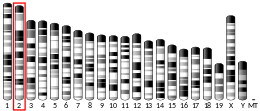Rnd3
| RND3 | |||||||||||||||||||||||||
|---|---|---|---|---|---|---|---|---|---|---|---|---|---|---|---|---|---|---|---|---|---|---|---|---|---|
 |
|||||||||||||||||||||||||
|
|||||||||||||||||||||||||
| Identifiers | |||||||||||||||||||||||||
| Aliases | RND3, ARHE, Rho8, RhoE, memB, Rnd3, Rho family GTPase 3 | ||||||||||||||||||||||||
| External IDs | MGI: 1921444 HomoloGene: 21074 GeneCards: RND3 | ||||||||||||||||||||||||
|
|||||||||||||||||||||||||
|
|||||||||||||||||||||||||
|
|||||||||||||||||||||||||
|
|||||||||||||||||||||||||
| Orthologs | |||||||||||||||||||||||||
| Species | Human | Mouse | |||||||||||||||||||||||
| Entrez |
|
|
|||||||||||||||||||||||
| Ensembl |
|
|
|||||||||||||||||||||||
| UniProt |
|
|
|||||||||||||||||||||||
| RefSeq (mRNA) |
|
|
|||||||||||||||||||||||
| RefSeq (protein) |
|
|
|||||||||||||||||||||||
| Location (UCSC) | Chr 2: 150.47 – 150.54 Mb | Chr 2: 51.13 – 51.15 Mb | |||||||||||||||||||||||
| PubMed search | |||||||||||||||||||||||||
|
|
|||||||||||||||||||||||||
Rnd3 is a small (~21 kDa) signaling G protein (to be specific, a GTPase), and is a member of the Rnd subgroup of the Rho family of GTPases. It is encoded by the gene RND3.
Like other members of the Rho family of Ras-related GTPases it regulates the organization of the actin cytoskeleton in response to extracellular growth factors.
Like Ras, Rho family members appear to cycle between an inactive GDP-bound form and an active GTP-bound form. Three major regulators of Rho activity have been identified: RhoGDIs, which interact with the GDP-bound Rho proteins to keep them in a resting complex (see MIM 601925); GEFs, which promote GDP/GTP exchange leading to activation of Rho proteins (see MIM 601855); and GAPs, which stimulate GTP hydrolysis and return the activated Rho protein to its inactive form (see MIM 602680) (Nobes et al., 1998).[supplied by OMIM]
...
Wikipedia





